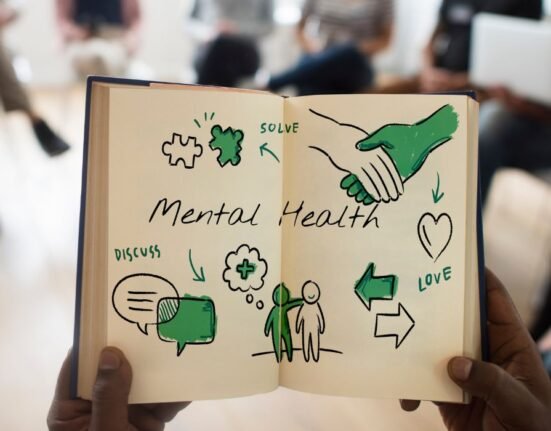Are you very self-conscious in every day social situations?
Are very afraid of being embarrassed in front of other people?
Are you extremely afraid of being judged by others?
Do you avoid meeting new people?
Find it scary and difficult to be with other people, especially those you don’t already know, and have a hard time talking to them even though you wish you could?
May have body symptoms when you are with other people, such as: blushing, heavy sweating, trembling, nausea, and having a hard time talking?
Every day, All day long, life is like this. Apprehension, Avoidance, Pain, Anxiety about what you said, Fear that you said something wrong, Anxious to enter a conversation, afraid you’ll have nothing to talk about. Worry about others’ disapproval. Afraid of rejection. Putting up a defensive wall to protect your “secret”. Are you having these feeling or you know someone else with similar feelings? For at least six months and these feelings make it hard for you to do everyday tasks—such as talking to people at work or school then, ordering a meal in a restaurant, using a public telephone or public restroom, writing in front of other people, then, you are probably undergoing the daily, chronic trouble of living with this mental disorder we know as social anxiety disorder or social phobia.
“Don’t be silly. Everybody is too busy with their own lives to focus on you.”
Social anxiety is the third largest mental health care problem in the world today. The key feature of social phobia is the fear of being scrutinised and being evaluated negatively by other people. It is a long-lasting and overwhelming fear of being judged and evaluated, leading to feelings of inadequacy, inferiority, self-consciousness, embarrassment and humiliation. This fear can affect professional, as well as personal life even the day to day activities, are affected. But this condition doesn’t stop one from reaching their potential. It’s a common problem that usually starts during the teenage years. For some people, it gets better as they get older, although for many it doesn’t go away on its own.
It hampers the daily life of an individual as they are unable to do the regular and important tasks as well for which interacting with others or being in a social situation is required and one can’t avoid these situations every time. They are afraid of doing common things in front of other people; for example, they might being afraid to sign a check in front of a cashier at the grocery store, being afraid of eating and drinking in front of other people. Telephoning someone (especially people they do not know well), talking with authority figures, returning goods to a store, being the centre of attention (e.g. going into a room when everyone else is already seated or Writing/working when others are observing). Everyone feels a little bit nervous, sometimes about things like meeting new people or giving a speech. But people with social phobia worry about these and other things for weeks before they happen.
“While a little anxiety is part of life, it interferes with the daily functioning of those suffering from social anxiety”
Overwhelming anxiety that interferes with daily life is not normal. By itself, anxiety isn’t a problem. It anchors the protective biological response to danger which fastens one’s heartbeats and breathing, pumping oxygenated blood to muscles in body preparing to fight or flight by producing adrenaline. When the fight or flight response is activated, adrenaline is released, which produces a number of physical sensations, including rapid heart rate and breathing, sweating, shaking, tense muscles, and butterflies in the stomach. An urge to flee the situation is often experienced. This fight or flight response occurs whenever we judge a situation to be threatening. In social phobia, the threat is only at psychological level or a perceived one which is not actually present, such as the fear is about not being respected, approved of, or liked. We all desire to be liked by other people but in social phobia this need for approval is exaggerated and the detection of the threat is too sensitive. Thinking negatively about situations or events when it has already happened also triggers further anxious feelings and tends to reinforce how badly one thought they performed on that. Negative thinking plays a major role in maintaining the anxiety response in these situations. So when anxiety is overwhelming then it becomes a matter of concern otherwise a bit of anxiety is normal. Without adrenaline, we can’t give our best performance.
A dollop of healthy anxiety can persuade one to get to work on time, motivation to study hard for the exam, or even discourage one from wandering dark streets alone. The problem is that sometimes the systems underlying anxiety response gets imbalanced so that one overreact or react to the wrong situation. Thus, irregular or disturbed secretion of adrenaline causes anxiety. Recently the modern technical lifestyle and use of mobile phone and internet have increased the chances of social anxiety. The internet is a more comfortable place for people with social anxiety. Communicating online is convenient because one can more easily control the impression they make. Communicating in text format eliminates the worries that may come with audio/visual communication. This is almost a cliché about the socially anxious person huddled in the dark in front of a monitor, spending all their time online and avoiding the real world. It turns out this is not true. There is no concrete, consistent evidence that people with social anxiety spend any more time online than others. People with social anxiety are more likely to become anxious when their internet access is interrupted. They are also more likely to develop unproductive thoughts like they are respected online only which can actually make social anxiety worse. They may also neglect some face-to-face relationships in order to nurture the online relationship.
“Treatment can help people with social anxiety feel less anxious and fearful.”
Social phobia is often left undiagnosed because people having social anxiety are very uncomfortable to talk about their fears and tend to avoid visiting a clinic as they feel anxious while sitting in waiting area because of their of socialization and communicating with other people sitting there. Sometimes even clinicians fail to make the diagnosis either because they confuse social phobia with normal shyness, or mistakenly diagnose secondary depression or substance dependence to be the primary cause of this behaviour. About one-third of people getting treatment of social phobia have avoidant personality disorder adding more complications to the treatment process. Both psychotherapy and pharmacotherapy are effective in the treatment of social anxiety.
Computer Mediated Communication
In order to treat social phobia, rather than focusing on why one has social anxiety, it is more useful to look at what is maintaining social anxiety. On the same lines, Communication apprehension: anxiety associated with communication with another person contributes to social anxiety. Researchers suggest that anxiety during interaction is learned by conditioning-based reinforcement in communication. The internet provides a new medium for computer-mediated communication without face-to-face interaction. As the internet enables anonymity and free self-presentation, the fluidity of self- identity may attenuate concerns about criticism by others. Lack of direct interaction may also diminish concerns about being negatively evaluated by others. So computer-mediated-communication can be seen as a potentially new mode to combat social anxiety.
“There is nothing either good or bad, but thinking makes it so.”
Psychotherapy:
Cognitive Behavioural Therapy (CBT) is useful for treating social anxiety disorder. CBT teaches different ways of thinking, behaving, and reacting to situations that help one feel less anxious and fearful. It can also helps an individual to learn and practice social skills. This type of therapy has two main parts:
- A cognitive element: limit distorted or disproportionate thinking
- a behavioural element: change the way people react to objects or situations that trigger anxiety CBT should include
Ongoing assessment of a person’s levels of anxiety in relation to their social phobia.
Psycho-Education about anxiety, tailored to each individual’s needs.
Training the strategies to manage anxiety symptoms, and encouragement in practising these techniques regularly.
Behavioural interventions: The individual may also receive graded exposure therapy, in which they gradually work up to facing the situations they fear. With cognitive delivered exposure (CDE), the patient safely confronts the situations or places that cause problems, in the company of the therapist. CBT may also include “social mishap exposure”, with people putting themselves in situations where they embarrass themselves in public. During these exposures, people with social phobia are able to confront very uncomfortable situations, thereby increasing the power of exposure, and challenge common thoughts. The therapist should also focus on encouraging the person suffering from social anxiety to identify and let go of safety behaviours. These behaviours include avoiding eye contact with others, sitting alone in a corner, mumbling or speaking very softly, and pre-planning all social encounters. People with social phobia often rely on these safety behaviours and believe that they cannot cope without them.
Cognitive interventions: helps people with social phobia to identify and challenge their fears. A person should monitor their thoughts, and label their thinking distortions during specific situations throughout the day.
Shifting attention: Once a person has identified and challenged their maladaptive thoughts, they should be encouraged to focus on the present, and to think rationally about the present situation rather than feared future outcomes.
Mindfulness-based interventions can also help individuals practice remaining present-focused.
Some people with social phobia may need to learn basic conversational and interpersonal skills and practice these in minimally aversive social situations.
Medication:
- Anti-anxiety medications: are powerful and starts working right away to reduce anxious feelings; however, these medications should not be taken for long periods of time
- Antidepressants: are mainly used to treat depression, but are also helpful forreducing the symptoms of social anxiety disorder.
- Beta-blockers: are medicines that can help in blocking some of the physical symptoms of anxiety on the body, such as an increased heart rate, sweating, or tremors. Beta-blockers are commonly the medications of choice for the “performance anxiety” type of social anxiety.
Don’t give up on treatment too quickly. Both psychotherapy and medication can take some time to work. A healthy lifestyle can also help in combating anxiety. Make sure to get enough sleep and exercise, eat a healthy diet, and turn to family and friends who you trust for support.
Other techniques:
The following lifestyle tips will help one to reduce anxiety levels and set the stage for successful treatment.
Avoid or limit caffeine (act as stimulants that increase anxiety symptoms), Get active (Make physical activity a priority), Quit smoking (Nicotine is a powerful stimulant), Get enough quality sleep and Breathing and relaxation exercises ( help in managing biological symptoms of anxiety).
Fast facts on social anxiety People with social anxiety disorder are disproportionately nervous in social situations.Approximately 6.65% of total population has social phobia/ anxiety once in their lives.Individuals with social phobia live with their disorder for years or even decades before they seek help.Social anxiety negatively affects family life, social functioning, education, work and close relationships of the individual.
Risk factors Genetics: The risk of developing the condition may be higher if a person’s parents or siblings have this problem.
Nurture: Some people believe that social anxiety disorder may develop in people who have witnessed anxious behaviour in others around them.
Life experiences: Children who have experienced bullying, ridicule, humiliation, or rejection are said to be more susceptible to social anxiety when compared to other people. Factors can also include sexual abuse, a family conflict, or another negative experience.
Personality: Withdrawn, restrained, shy, or timid children are thought to be more prone to developing social anxiety disorder.
A demanding ordeal: Some people may experience social anxiety for the first time when they have to make an important presentation. The negative spiral of thoughts that contribute to social anxiety can turn a mild hang-up with talking to large groups of people into a serious mental health issue.












Leave feedback about this